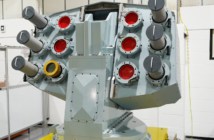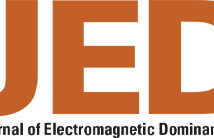By John Haystead
The Defense Advanced Research Projects Agency (DARPA) is holding its annual “Electronics Resurgence Initiative (ERI) Summit” conference from Aug. 22-24 in Seattle, Washington. This year’s Summit is focused on the theme, “Reinventing Microelectronics Manufacturing,” in particular “ERI 2.0” and 3D Heterogenous integration (3DHI). Announced in March of this year, ERI 2.0 seeks to strengthen DARPA’s leadership in driving the next generation of microelectronics for national security by creating a domestic capability for 3DHI manufacturing and research through its Next-Generation Microelectronics Manufacturing (NGMM) program. Says Dr. Carl McCants, Special Assistant to the DARPA director for ERI, “DARPA recognized that major advances in microelectronics and the realization of devices with unprecedented performance advantages were going to come from the ability to manufacture microsystems utilizing not just silicon substrates but other materials as well, and that having this capability ‘on shore’ is critical.” The NGMM program aims to create a National Center for 3DHI pilot-line manufacture, which McCants describes as “a stable, pre-commercial process, but one we’ll be able to utilize as a catalyst for research and development of 3DHI manufacturing capabilities.”
The ERI Summit will feature an overview from Dr. McCants on the progress of “Phase 0” of the NGMM program, as well as workshops from the different performer teams doing work on the effort providing some of the specifics about where they are and what they’ve done with the analyses of their 3DHI microsystems.
Directly related to this, DARPA just released news on its Advanced Sources for Single-event Effects Radiation Testing (ASSERT) effort. Because of their multiple layers of vertically-integrated circuits, complex interconnects and diversity of materials, 3DHI components present new challenges for radiation testing and qualification. One of the things expected to happen at the NGMM Center, says McCants, is recognizing the impact of these challenges, and how closely tied together the design and test functions are. “The industry’s current design-for-test model doesn’t address these additional testing complications,” he explains. “When we get to 3DHI, in order to speed the time to deployment, the goal is to make radiation testing an integral part of the design, fabrication, and development processes, instead of waiting until the end to do the final testing.”
The ERI Summit will also feature sessions on supply chain issues and the impact of the CHIPS Act in particular. Signed into law in August of 2022, the Creating Helpful Incentives to Produce Semiconductors and Science (CHIPS) Act is designed to boost US competitiveness, innovation and National security. The law aims to catalyze investments in domestic semiconductor manufacturing capacity.
Although DARPA has not itself received any CHIPS Act funding, it is involved in committees that are directly tied to the research areas and some of the ways that the Department of Commerce is considering utilizing that funding. In terms of what DARPA can do, McCants points to one of the most important contributions of the NGMM center is the creation of a domestic ecosystem for 3DHI throughout the entire design, fabrication, assembly, packaging, and testing process. “With each of these pieces, there is a supply network affiliated, so what we’re attempting to do with the NGMM Center and 3DHI in particular is providing a domestic center that reduces the ‘supply-chain-attack- surface,’ because the more that you can do of this process in a place that you have more direct input and visibility into who is providing the components and microsystems, the better. The first part of this, however, is acknowledging and recognizing that there has to be a certain component of on-shore fabrication/manufacturing especially when it comes to defense and National security applications.”
Opening day of the ERI Summit includes presentations from Dr. Laurie Locascio, Under Secretary of Commerce for Standards and Technology and Director National Institute of Standards and Technology (NIST), together with Dr. Margaret Martonosi, Assistant Director for Computer and Information Science and Engineering (CISE), National Science Foundation (NSF) Representative, CHIPS Research and Development Program; and Dr. Andrew Schwartz, Director Material Sciences Division at the Department of Energy (DOE) will be presenting on the opening day of the Conference. The full conference agenda is available at https://eri-summit.darpa.mil/2023-agenda.






